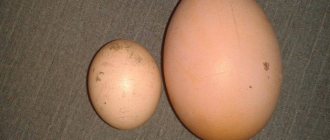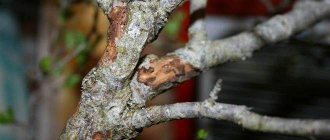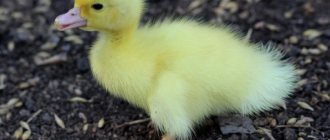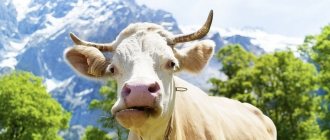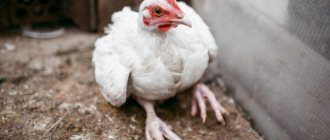Problems with newborn calves
There can be many reasons why you may have problems getting on your feet in the first hours after birth.
Some of them indicate serious health problems:
- Problems with the heart muscle.
- Deviations in the development of the gastrointestinal tract.
- Low level of hemoglobin in the blood.
- Inflammation in the uterus of a cow.
- Problems with the musculoskeletal system.
- Deviations in the central nervous system.
- Prolonged labor.
- Hotel difficulties.
- Not fully developed lungs.
- Hypoxia.
Major diseases
All farmers who understand their business know that for good health and high productivity of cows, it is necessary to provide them with safe housing and balanced feed. The absence of one or another factor leads to infection of livestock with one or another serious ailment. It is for this reason that the first step is to ensure comfortable and prosperous conditions for keeping cows. In most cases, a cow cannot stand on her feet due to the following joint diseases:
- Stretching
- Dislocation
- Arthritis
- Arthrosis
The disease also occurs due to problems with the hooves of cattle. The main and most common are:
Each farmer needs to be familiar with the description of each of the listed diseases so that, if necessary, they can navigate and understand when the inevitable help of a veterinarian is needed.
Hypoxia
Hypoxia is one of the main and most common reasons why after birth a calf has difficulty getting up and standing on its feet.
The cause of hypoxia can be a lack of nutrients in the diet of a pregnant cow. In this case, the expectant mother has to consume vitamins from internal reserves for the growth and development of the fetus.
If the calf does not have enough of this amount of nutrients, it begins to have problems with metabolism, hence oxygen starvation develops. The consequence of oxygen deficiency is the occurrence of problems and abnormalities in the functioning of internal organs, primarily the brain. Next, the heart, lungs and liver suffer.
Causes of weakness in an older calf
If a calf has a swollen joint, this may indicate arthritis or myositis (inflammation of the skeletal muscles). At the same time, body temperature rises sharply. These diseases occur due to metabolic disorders, bruises, sprains or torn ligaments. It is recommended to provide the animal with rest, apply cold to the affected areas and a pressure bandage, then apply warm compresses.
With a zoonotic infection (pasteurellosis) or acute intestinal infection (salmonellosis), the joints increase in size, and at the same time, indigestion in the calf is observed. In these cases, the sick calf should be given complete rest and a cooling compress should be applied to the swollen joints. In case of a protracted disease process, you should massage the limbs with an application of 10% ichthyol ointment or camphor oil.
Other causes of hypoxia
In addition to vitamin starvation, the development of hypoxia can be provoked by other deviations:
- Twisting or compression of the umbilical cord during calving. If such a defect is also accompanied by protracted labor, the problems can be very serious.
- Inflammation in the uterus of a pregnant cow, which can cause circulatory problems in the fetal sac. As a result, the calf in the womb suffers from a lack of oxygen.
Important! A newborn calf suffering from hypoxia cannot breathe normally. When listening, a faint heartbeat is heard.
The situation is complicated by the fact that after birth the airways are closed by residual amniotic fluid, which further complicates the functioning of the lungs.
Causes of the problem
Before figuring out what to do with such ailments, they determine why the calf does not get to its feet and what has so affected its well-being. It is the reasons that will help you understand what prevention will be effective to protect the newborn from this scourge. There are many reasons why a calf cannot stand on its feet, but we will try to highlight the most common and important ones.
To begin with, you should understand that if a newborn calf cannot get up on its feet and if it falls and does not get up again, these are two big differences. If in the second case the cause is various diseases, then in the first there are many more reasons.
- Lack of nutrition. Because of this, the fetus suffers from oxygen starvation, which can then affect not only the animal’s ability to rise to its feet, but also its overall health. Oxygen starvation is also called hypoxia.
- There may be clinical signs, with the calf having weak muscles, completely dry skin and absolutely no fat layer.
- Development of white muscle disease. Scientists say that it manifests itself in newborns and adults from a lack of vitamins.
- A disease called tetany, which also manifests itself from a lack of vitamins. But here the main vitamins, the lack of which causes such a disease, are A, B, D or a lack of manganese, iodine or zinc.
Naturally, it is very difficult to identify all the reasons why children may not get stronger on their feet; an individual approach to each case is needed.
Help with hypoxia
In general, in the first minutes after birth, almost all calves in one way or another experience short-term interruptions in the supply of oxygen to the body. This is due to the fact that the airways are clogged with mucus.
Usually, if a calf is born healthy, it can come to its senses and take its first breath of air without outside help. If real breathing problems are observed, the first thing a person should do is urgently call a veterinarian.
Before his arrival, you need to provide first aid to the calf:
- Clear the airways of birth mucus by lifting the calf by the hind legs.
- Press down the paranasal passages to also clear them of mucus accumulation. It is better to do this by clasping your muzzle with your hands.
- Use cold water to stimulate blood circulation and ease breathing. Just spray the back of your head with it.
- The drug “Respirot” stimulates the functioning of the pulmonary system well. It needs to be dripped into the nasal passages, or behind the cheek of the calf.
If these actions do not lead to the desired result, the arriving veterinarian must administer a dose of adrenaline to stimulate the respiratory system. Sometimes calves have to perform artificial respiration by covering the mouth and one nostril of the individual.
In the absence of timely assistance, a newly born calf risks dying. This can happen within the first hours after calving.
Causes of the disease and treatment
Dyspepsia in calves occurs in various forms. The disease is caused by various reasons caused by errors in determining the diet for young animals and caring for them in the first days of life.
If a calf's sucking reflex is absent, hypoxia is most often to blame. The animal receives little oxygen, the brain cells are under stress, so the reflex program is disrupted. To eliminate the problem, you need to lift the calf by its limbs, securing it in a standing position. After this, the baby is given a tongue massage. To restore sucking, it is recommended to pour Riegner's solution on his tongue or give him a pinch of salt. If these measures do not help, you need to urgently call a veterinarian.
What to do when the calf is panting and lethargic? The cause of the disease is damage to the animal’s stomach by viruses and low immunity of the young individual. First you need to help him get to his feet, and then give him some water to drink. It is best to call a veterinarian to treat this condition.
Farmers often complain that the calf does not eat or drink, what to do in such cases? You need to bring the animal to the cow's udder or dip your finger in the milk, and then put it on the calf's tongue.
What to do, the calf does not drink milk and turns away? You need to check the temperature of the liquid. If it is cold (temperature below +37..+39 °C), then the animal will not try the food. The calf does not eat even if it does not like the taste of milk. So you just need to replace the food. To improve the taste, fish oil, egg, and salt are added to the product.
Dyspepsia in calves
If the calf does not get to its feet after diarrhea, you need to force it to get up on its own by securing the animal in a standing position. The farmer must give the animal intravenous infusions of glucose, introduce more vitamins into the patient’s diet, and improve the heating of the barn.
If a weak calf is born, a veterinarian can tell you what to do. Often such an animal is prescribed stimulants, milk is enhanced with additives, and hydrolysine injections are prescribed (dosage 50-100 mg).
If the calf is lethargic and does not eat well, it is recommended to immediately call a doctor. This is how young animals exhibit symptoms of dangerous diseases, so self-treatment can lead to death.
Indigestion, colds and other disorders must be properly diagnosed. This can only be done by an experienced doctor. Without treatment, the condition will worsen. The farmer can only alleviate the animal's condition by lifting it.
If the calf lies with its legs and head stretched out, then you need to check its stomach. If there are no changes, the animal refuses to eat or has heavy breathing, it is recommended to immediately call a veterinarian.
Note ! If the calf is no more than a week old, oxygen starvation may occur due to myocardial flabbiness. Then you need to urgently call a doctor.
If the calf does not get to its feet, then the reason for this is hypoxia, prolonged labor, and disruption of the central nervous system. This will require complex treatment, otherwise rapid changes in the body will lead to the death of the animal. Self-treatment is prohibited, otherwise complications may occur.
Mechanical damage
These can be bruises, sprains, scratches, joint damage, dislocations, fractures and inflammatory processes.
At the first signs of the calf's reluctance to get up on its feet, it should be carefully examined for various types of damage. The inspection must be carried out visually and by palpation. The calf will certainly react to pain with a reaction.
If external damage in the form of wounds or cuts is detected, the following actions should be taken:
- Rinse the damaged area with clean water.
- Treat with peroxide or potassium permanganate.
- Apply streptocide and a bandage.
- Give an injection of tetracycline or bicillin-5.
Problems with the musculoskeletal system can arise not only due to bruises and wounds. The reasons may be much more serious. For example, abnormal development of the fetus in the womb, birth injuries and viral infections acquired at birth.
If these problems are detected, you should immediately call a specialist. Often, with serious injuries received at birth, calves are sent to slaughter.
Why do pigs and piglets have leg failure?
Before you fix the problem, you need to familiarize yourself with the main reasons for its occurrence.
Infectious diseases
The main reason why the mumps stopped getting on its feet is the emergence and development of infectious diseases. Common diseases include:
- Plague. This is a dangerous disease that affects pigs at any age. If treatment is not started in time, the animal may become completely paralyzed. In sick pigs, their legs fail, their appetite worsens and weakness appears.
- Erysipelas. The disease develops in young pigs 3-4 months old. The animals' joints become inflamed, causing them to stop walking and sit on their feet.
- Flu. As swine flu develops, piglets may stop walking. The remaining symptoms are the same as in humans.
- Teschen's disease. The disease is more common in young pigs under six months of age. Sick animals develop diarrhea, vomiting and symptoms of rhinitis. Also, due to a decrease in body temperature and weakness, the pig cannot rise to its feet.
Stress
If the pig sits on its hind legs, you should not immediately think that it is sick with something. This problem does not always appear due to illness. Sometimes this happens due to stressful situations. Most often, stress occurs in animals that live alone in a barn. Piglets also face stressful situations and are often relocated to a new location. In this case, the animals get back on their feet on their own immediately after the stress ends.
Parasites
Another common reason why pigs fall on their feet is parasites. Most often, small pigs encounter worms. They have a negative impact on them, since the weakened body of young animals cannot cope with the toxic effects they have. Because of this, they gradually become exhausted, weaken and stop walking.
In order for the pig to start getting back on its feet, the worms will have to be removed from its body. To do this, they are given special drugs against parasites. The dosage is determined individually depending on the weight of the pig.
Violation of containment conditions
If a piglet falls on its feet, you should think about the conditions in which it is kept. The following may cause this problem:
- increased humidity levels;
- cold floor, on which there is no additional straw bedding;
- low air temperature in the barn;
- draft.
Therefore, if the barn is too cold and damp, you should insulate it or choose another room for keeping piglets.
Lack of vitamins and microelements
If your piglet's legs are failing, it may be lacking micronutrients. Sometimes animals lack iron, which leads to the development of anemia. Because of this, they weaken and stop walking normally. The problem also occurs in gilts with calcium deficiency.
Improper feeding and care
It often happens that diseases in livestock are provoked by the owner himself. Of course, unintentionally, since no normal farmer would harm his pets and cause financial damage to his enterprise. This usually happens due to inexperience, or due to the irresponsibility of workers caring for young animals:
- using a nipple with a hole that is too large when feeding;
- feeding with stale food;
- using cold or stale colostrum to feed calves;
- overfeeding;
- sudden change in diet;
- improper care and maintenance;
- feeding with mastitis milk;
- long stays outdoors in strong winds and low temperatures.
It is necessary to monitor the nutrition of calves very carefully, since their body is not yet prepared for stress and stress. The same applies to the conditions of detention.
Factors that influence the health of calves
It has already been indirectly mentioned that the main reason for the weakness of newborns is the poor nutrition of the cow during pregnancy. But there are other factors that influence the health of young animals in the first month of their life:
- Late start of the cow.
- Untimely drinking of colostrum.
- Giving colostrum from a sick cow, for example, one suffering from mastitis.
- Sudden changes in diet.
- Grazing on frozen grass.
- Feeding poor quality food.
- Failure to comply with feeding frequency, excess feed.
- Unsanitary conditions in the stall.
All these factors affect the health of calves in the first weeks of their life. They pose a particular danger to animals that have suffered hypoxia during calving, since their body is very weakened.
White muscle disease
Occurs when there is a lack of vitamin E, selenium and methionine in the diet.
Symptoms:
- rapid onset of fatigue;
- weakening of motor activity;
- labored breathing;
- loss of appetite;
- loose stools;
- inability to stand in a standing position.
To clarify the diagnosis, the veterinarian must take the calf's urine for analysis. It is examined for the presence of protein and myochrome pigment.
Important! For treatment, sodium selenite and vitamin E injections are used. If left untreated, the calf may die.
Sudden leg failure
An apparently healthy grown calf may stop standing on its feet. This pathology requires urgent diagnosis and assistance to the sick individual. The reasons for sudden leg failure are different:
- Hoof injuries.
- Disorders and pathologies of the nervous system.
- Diseases associated with a lack of microelements or vitamins.
Limb injuries
If the calf falls to its feet, does not get up, lies down, or makes attempts to get up, but drags its hind limbs behind it, first of all it is necessary to exclude a traumatic factor. Inspect the hooves for dislocations, punctures, and suppuration. Pay attention to the tone of the leg muscles.
Central nervous system disorders
If there is no injury, central nervous system disorders are suspected. In this case, the following symptoms are present:
- Reduced muscle tone.
- The pupils do not react to light or their reaction is very weak.
- The animal looks sleepy.
- Complete lack of physical activity.
Attention! The diagnosis of such symptoms must be made by a veterinarian, since in this case serious pathologies occur - spinal cord injuries, various tumors, hemorrhages, overheating of the animal.
Diseases
If there are no signs of damage to the nervous system, then other causes of leg failure should be considered - diseases caused by vitamin deficiencies:
- Rickets.
- White muscle disease.
- Goiter.
- Nutritional dystrophy.
All these ailments occur due to a lack of vitamins or microelements.
Rickets. It develops when there is a lack of vitamin D in the body. Additional symptoms that facilitate diagnosis are perverted appetite, deformation of the bones of the spine and limbs.
White muscle disease. It is observed with a lack of tocopherol and selenium. This disease, in addition to damage to the skeletal muscles, is characterized by other symptoms - swelling, enlargement of the heart, and congestion of the lungs.
Goiter. Occurs against the background of iodine deficiency. Characteristic signs are an enlarged thyroid gland, deformation of the bones of the skull and limbs, lethargy, protruding eyes, and low body temperature.
Nutritional dystrophy. The disease develops due to lack of food, the animal loses weight, becomes very weak and stops standing up. Other symptoms include hair loss, problems with bowel movements, and exhaustion.
Attention! Each of these diseases must be treated urgently, otherwise the death of the animal may occur. In these cases, it is impossible to do without veterinary care.
If the calf cannot stand up or falls to its feet after calving, it means it has suffered from hypoxia. Grown-up animals also, in some cases, stop rising, which is most likely due to either injury or disturbances in the central system. Another reason for this condition is diseases that develop against the background of vitamin deficiencies.
Tetany
Causes of the disease:
- stress associated with transportation, change of place of detention;
- lack of vitamins A, B, D, zinc, iodine, manganese.
Symptoms:
- weakness of the body;
- lethargic state;
- swelling of the joints;
- swaying when trying to stand up;
- falling when trying to walk;
- convulsions;
- salivation;
- in an advanced stage, displacement of the eyeballs may be observed.
To make an accurate diagnosis, your veterinarian will take blood samples for testing.
Once the diagnosis is confirmed, treatment is prescribed. It includes:
- introduction of increased amounts of magnesium and calcium salts into the diet;
- sedatives for severe attacks of pain.
Rickets
The cause of rickets is a deficiency of calcium and phosphorus in the calf’s body.
Rickets can develop at any age. There have been cases of congenital rickets, which arose due to a lack of vitamins in a pregnant cow.
Symptoms of rickets:
- lameness;
- impotence;
- swelling of the joints;
- curvature of bones;
- deformation of the skull;
- indigestion.
The manifestation of the disease is characterized by strange behavior of the calf. For example, you can watch him lick walls and feeders, lick the fur of other animals, and drink slurry.
To clarify the diagnosis, the veterinarian takes samples for analysis.
If rickets is confirmed, treatment is prescribed, which includes:
- taking vitamin D;
- vitamin and mineral complex;
- adding chalk, wood ash, bone meal to food, which will help restore the body;
- ultraviolet irradiation.
The bull doesn't get to his feet
If bulls are fed incorrectly, pathological manifestations can occur both in the gastrointestinal tract and in the musculoskeletal system. When cattle are kept in stalls, animals quickly gain weight. They are prepared for slaughter, but due to a lack of mineral salts of calcium and phosphorus, the bones of bulls can soften or become thinner. The limbs cannot withstand heavy loads, the young animals fall and cease to stand on their feet. The reasons are as follows:
- poor nutrition; excessive amounts of protein foods, the diet is unbalanced in minerals;
- lack of exercise; the bull must move;
- genetic predisposition of the breed;
- infectious diseases.
Treatment is aimed at normalizing the feeding and maintenance of animals. For bulls, the amount of forage feed and concentrates in the diet is reduced.
- Nitox is administered, which is an antibiotic. Injections are given in 6 different places so that the drug is better absorbed by the body.
- Preparations containing calcium and phosphates, vitamins “E”, and selenium are added to the feed.
- 250 ml of calcium gluconate is injected intramuscularly.
- The bulls are given "Sedemin".
Improper management of cattle can lead to complex manifestations in the body. Cows sometimes lie down, bulls try to lie down more and not get up, newborn calves are unable to get up. It is necessary to treat animals with care. Organize proper nutrition, exercise and maintenance for them.
Unsuccessful calving Paresis Paralysis of the hind legs How to treat Title Unsuccessful calving Paresis Paralysis of the hind legs How to treat Viewing time 10:39 Heading A cow that is unlucky. (Veterinarian Stories) Viewing time 12:00 Title Cow lay for 2 days - raised in 7 minutes Viewing time 12:25
Author rating Author of the article Igor Nikolaev Articles written 788
When young animals are born, they are often attacked by various viruses and microbes. Due to low immunity, the stomach and intestines of cattle are most often affected.
Nutritional dystrophy
The cause of dystrophy is food starvation or too little food that the calf eats.
When a calf loses 1/5 of its normal weight, its muscle mass is depleted, hair loss occurs, and the skin becomes flabby. In addition, the heartbeat slows down, breathing weakens, and the calf does not even have the strength to stand up. Often calves even defecate while lying down.
The treatment chosen is to enrich the calf’s body with nutrients and stabilize the gastrointestinal tract.
Prevention measures
For any disease, the best medicine is prevention.
In order to prevent the development of various kinds of diseases in young cattle, you need to adhere to certain rules and take mandatory measures to prevent diseases.
A very important condition is to care for the calf while it is in the womb of the cow.
- It’s better to start by organizing a systematic, balanced diet. When pregnancy occurs, it is important to enrich the body with vitamins and minerals so that the fetus develops normally and the cow feels normal.
- It is worth paying serious attention to the correct choice of the amount of food that a pregnant cow receives throughout pregnancy. Food should be in moderation, since both overeating and undereating are harmful.
- Walking a pregnant cow should be rationally organized. Fresh air is necessary for saturating the body with oxygen and the normal functioning of organs and systems.
It must be remembered that the health of the calf directly depends on the general condition of the cow, especially at the time of its birth. Therefore, it is better to ensure conscientious care of the cow during pregnancy and thoroughly prepare for calving.
Instructions for use of the drug
Eleovit for calves is prescribed by a veterinarian only after an examination. The drug is used to treat certain diseases in animals. The medicine is available in the form of injections. For preventive purposes, injections are given intramuscularly once a day for 15 days. They are placed in the thigh or neck.
Note ! The instructions indicate that the use of Eleovit for calves in winter is possible only after preheating the drug in a water bath.
Read also Chicken soup with lagman noodles
Indications for use of the medicine:
- general weakness of the body;
- stressful state;
- pregnancy;
- developmental delay.
- individual intolerance;
- hypervitaminosis;
- allergic reaction to the components of the product.
The veterinarian can suggest which drug should be used during treatment together with Eleovit for a quick recovery of the calf. When using the medicine, it is recommended to observe the following dosage:
- young animals under 1 year of age are given 2-3 ml of the drug;
- adults - 5-6 ml.
Overdose leads to changes in skin color. If an allergy occurs, a course of treatment with antihistamines is carried out. Before administering the medicine, wipe the skin with alcohol.
Important ! Before the procedure, the veterinarian must wear protective gloves, and after a course of treatment of the calf with Eleovit, throw away the used syringes.
Caring for a newborn calf
To avoid health problems and calves falling, they should be provided with proper care:
- Cleanliness and fresh air in the room.
- Feeding with fresh food.
- Saturation of food with vitamins and minerals.
- Diet appropriate for the age of the calf.
- Diet and regulation of the amount of food consumed by the calf.
- Gradual transition from one type of feed to another.
- Periodic veterinary examinations.
- Maximum exclusion of obstacles and dangerous areas that could cause injury to the calf and cause it to fall on its feet.
- If possible, avoid stressful situations.
Every farmer is interested in the success of his business. By ensuring that optimal conditions are created for the birth of calves and their maintenance, the breeder ensures stable financial growth and eliminates many problems associated with the treatment of young animals. This way, it creates conditions for the successful development of further business.
Preventive measures
To prevent diarrhea in calves, proper nutrition is recommended. The problem is solved as follows:
- The baby is given colostrum within 60 minutes after calving. If this operation is performed later, the animal may develop bronchopneumonia, diarrhea, or severe growth retardation.
- Colostrum is then given to the calf 5 times a day. Use an individual feeder equipped with a nipple. If cattle are fed from a bucket or other similar container, the calves begin to swallow the feed in large pieces, and this leads to the appearance of curd-like clots in the abomasum.
Tips and tricks from experienced livestock breeders and veterinarians
To help sick young animals, you need to follow certain rules for feeding and caring for animals. In 90% of cases, this eliminates diarrhea. The following is recommended:
- The disease should be treated immediately after the first symptoms appear. For this purpose, a special place must be allocated in the barn.
- The calf is immediately given herbal infusions and salted water. The next day you need to make a mixture of oats and rice with milk.
Note ! The content of the milk component should be minimal (no more than 1 glass per head).
After following these measures, diarrhea goes away on the 4th day. If this does not happen and the animal continues to diarrhea, it is recommended to treat it with antibiotics prescribed by a doctor.
The birth of a calf is a real event on the farm. They waited for his appearance for 9 months. But even if the cow calved safely, the baby may die either immediately after birth, or a little later. This happens for various reasons. Not all calves are born strong and healthy; some need help, otherwise they will not be able to get back on their feet.
Not every calf can stand on its own feet after birth
